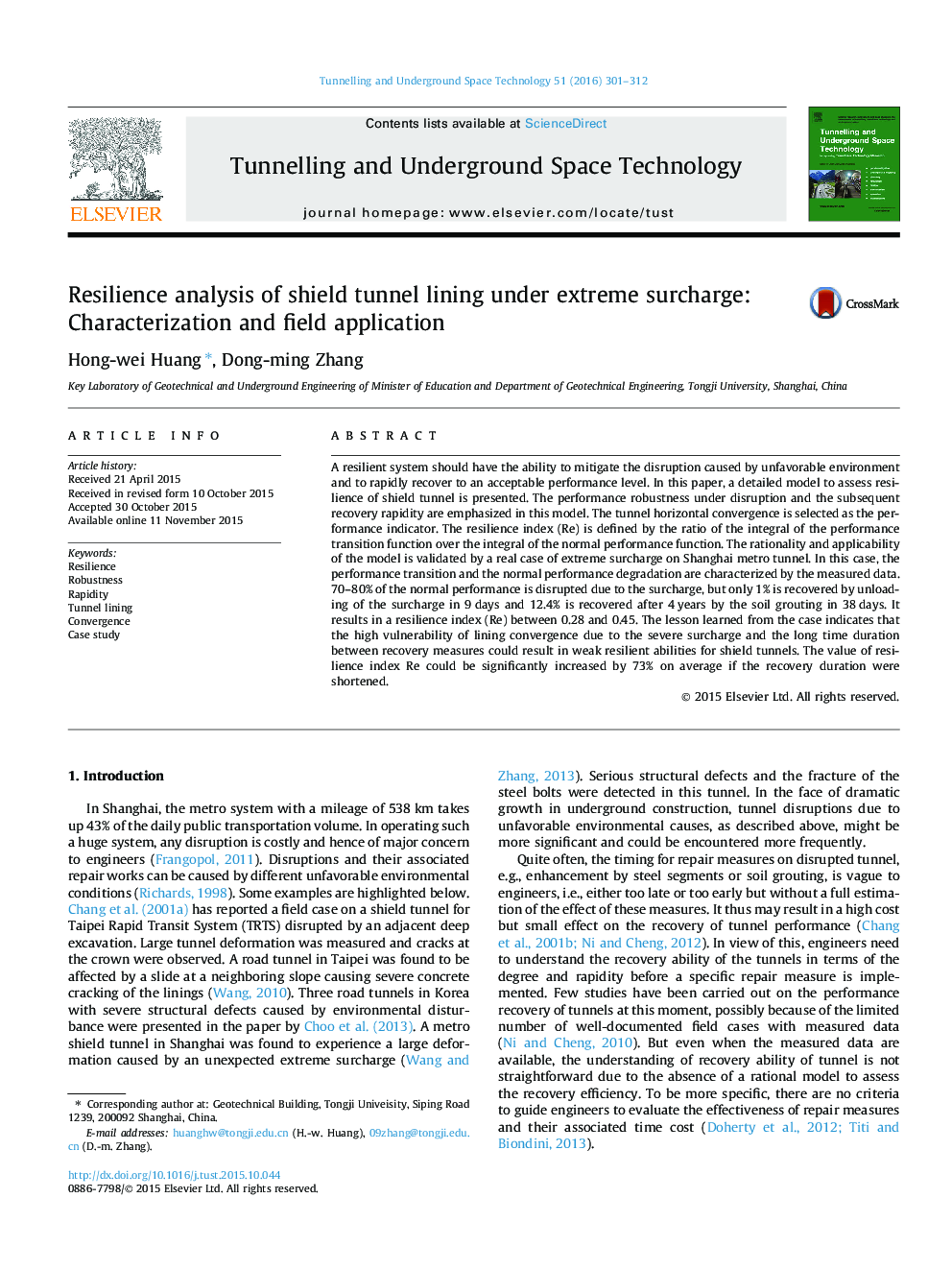| Article ID | Journal | Published Year | Pages | File Type |
|---|---|---|---|---|
| 311746 | Tunnelling and Underground Space Technology | 2016 | 12 Pages |
•Resilience analysis for shield tunnel lining under extreme surcharge is presented.•It is applied into a well-documented real tunnel in Shanghai by monitoring data.•Robustness and rapidity are the two key components for resilience of tunnel lining.
A resilient system should have the ability to mitigate the disruption caused by unfavorable environment and to rapidly recover to an acceptable performance level. In this paper, a detailed model to assess resilience of shield tunnel is presented. The performance robustness under disruption and the subsequent recovery rapidity are emphasized in this model. The tunnel horizontal convergence is selected as the performance indicator. The resilience index (Re) is defined by the ratio of the integral of the performance transition function over the integral of the normal performance function. The rationality and applicability of the model is validated by a real case of extreme surcharge on Shanghai metro tunnel. In this case, the performance transition and the normal performance degradation are characterized by the measured data. 70–80% of the normal performance is disrupted due to the surcharge, but only 1% is recovered by unloading of the surcharge in 9 days and 12.4% is recovered after 4 years by the soil grouting in 38 days. It results in a resilience index (Re) between 0.28 and 0.45. The lesson learned from the case indicates that the high vulnerability of lining convergence due to the severe surcharge and the long time duration between recovery measures could result in weak resilient abilities for shield tunnels. The value of resilience index Re could be significantly increased by 73% on average if the recovery duration were shortened.
